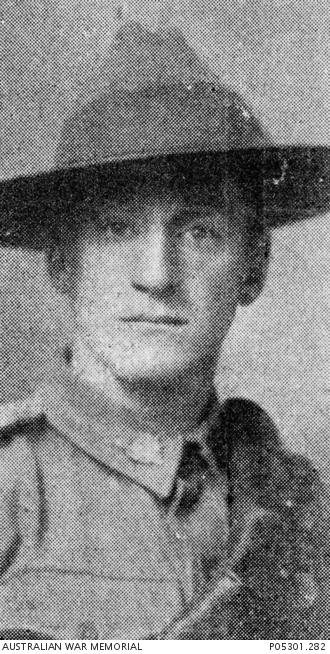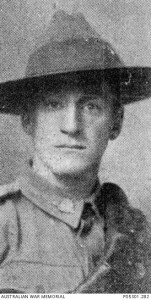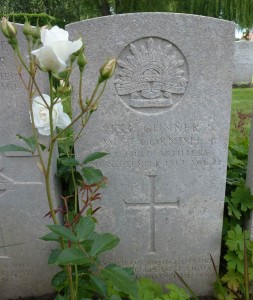Walter Thomas Cornish was the second of three boys born in London to Phillip and Frances Cornish. When Walter was a boy the family emigrated to Australia, settling in Orange. Walter and his older brother Edmund were educated at Orange East Public School; and both brothers went on to enlist in the First World War. A youngest brother – Thomas – also served in WWI, however there appears to be no record of his enlistment.
20 year old Walter enlisted in June 1915, ten months after Edmund. A private in the 13th Battalion, 7th Reinforcements, he embarked from Sydney in August, arriving at Mudros on the Greek island of Lemnos in October. Walter was hospitalised two months later, suffering from frostbite. He would be hospitalised on two further occasions; in February 1916 with pleurisy, and in December the same year with influenza.
In March 1916 Walter joined his brother Edmund as a Gunner in the 10th Field Artillery Brigade. Three months later he joined the British Expeditionary Force in France. Walter was gassed in August 1917, but recovered sufficiently to rejoin his unit, only to sustain a gunshot wound to his abdomen a month later. Gunner Cornish died of his wounds on 22 September 1917. He is buried at Lijssenthoek Military Cemetery in Belgium. Walter was one of seven men from the Orange district to die during the Battle of Menin Road Ridge.
The following month Walter’s mother, Frances, read in the Daily Telegraph that a Gunner Walter Cornish had died of wounds, prompting her to write to the Defence Department:
I am anxious to know if it is my son Gunner Walter Cornish 2533 that is referred to. I cannot understand why I have not been advised of his death. Will you kindly write by return and explain as I am most anxious.
It seems that the Army had sent the notification of Walter’s death to his parents’ old address in England.
The Leader, in reporting his death stated:
Gunner Cornish was well known in Orange, and it seems only the other day that he was swinging along to school in knickerbockers.
Following Walter’s death his parents received a letter from Major Harold de Low, of the 38th Battery, in which he offered his condolences:
I would like to express to you my very, great appreciation of your son. He has been with me ever since I had the battery … and I always found him willing and cheerful, often under very trying circumstances. He was very cool under fire, and generally a man beyond his years in courage, ability and coolness.
Major de Low added:
Your other son, Sergeant Cornish, is one of my best men. He will, I believe, go over to England to train recruits.
This was not to be, Walter’s brother Edmund was killed in action 11 months later, in August 1918. As the Leader on 2 September 1918 claimed:
It can well be said of the Cornish family that they have done their bit for the Empire.
Walter’s name appears on the Orange East Public School Honour Roll and the St Joseph’s Church Orange Honour Roll alongside those of his brothers Edmund and Thomas.
Walter and Edmund’s names appear on the memorial plaque in Newman Park, along with 14 others who had 16 pin oak trees planted in their honour in August 1919 by East Orange Public School principal Mr AT Caldwell.
Walter is also commemorated on the on the World War I Roll of Honour on the southern face of the Orange Cenotaph.
In 1923 the Anzac Memorial Avenue of trees was planted along Bathurst Road to commemorate fallen WWI soldiers. A tree was planted in honour of “Pte WS Cornish”; presumably Walter. The tree was donated by AW Deane. Very few of the trees are still standing today.



